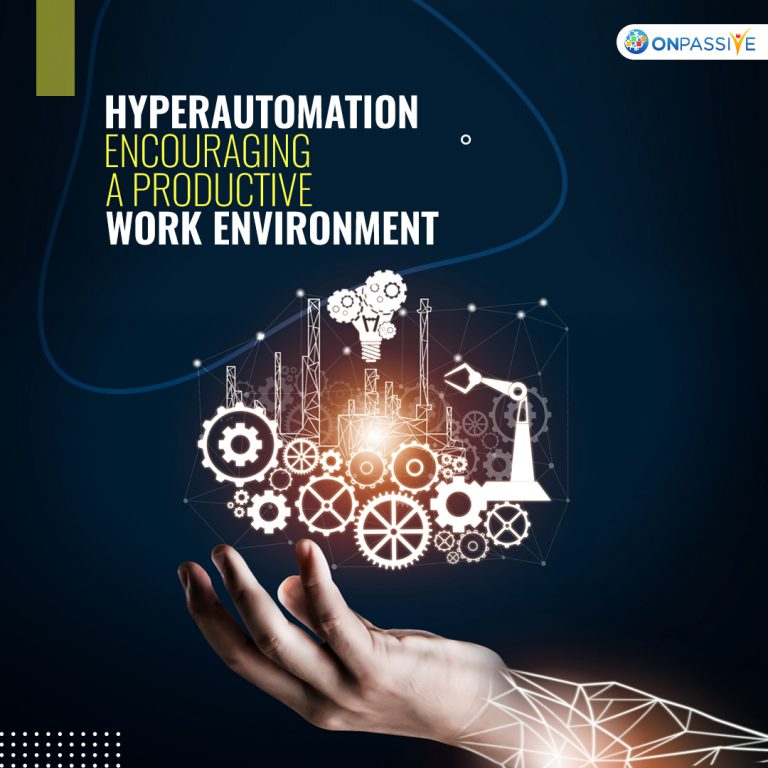
What is Hyperautomation?
Automation process, without a doubt, improves the efficiency of the business process. However, it focuses on a narrow set of tasks. In this, a single technology or technologies are combined into a single tool that optimize and automates tasks. Hyperautomation, on the other hand, augments business processes and provides end-to-end automation by clubbing technologies like RPA, AI, ML, iBPMS, etc. The aim is to transform the business and IT industry by automating and optimizing various processes from start to end and to streamline complex processes with zero error.
According to Gartner,
“Hyperautomation is an effective combination of complementary sets of tools that can integrate functional and process silos to automate and augment business processes.”
Automation Tools to achieve Hyperautomation
Robotic Process Automation (RPA)
RPA is the core to achieve hyperautomation. RPA, or Robotic Process Automation, is a process automation solution designed to automate different tasks that are performed in a specific order. To be more precise, RPA is a programmed software that functions across different applications to carry out basic, repetitive tasks, just as employees do at the workplace. The main purpose of RPA is to reduce the load on employees in completing simple and low-value tasks. However, RPA bot capabilities are enhancing with advancing technologies and is able to perform more complex actions that require cognitive skills. Such RPA software is also known as Intelligent RPA or Cognitive RPA.
iBPMS
BPMS stands for Business Process Management System or Business Process Management Software. We know that all organizations are process-based and each process involves a series of activities performed with the collaboration of employees and systems in an organized manner to achieve a specific goal. However, if the processes are not managed properly it will adversely impact the efficiency of the entire business. BPMS analyzes the business process and automates it from the start to end workflow. Intelligent BPMS or iBPMS is an upgraded and advanced form of BPMS that offers greater functionality like real-time analytics, human interaction management, complex event processing, content management, etc.
Process Mining
From optimizing business processes to risk identification, process mining plays a significant role in different industries. When processes are documented it looks simple and structured. However, in practice process are more complex, and sometimes turn out to be less productive as expected due to various factors. Process Mining methodology provides organizations an analytic insight into business processes. It allows organizations to visualize the business process operations and helps to find out the repetitive tasks that can be automated with RPA or AI. Process mining is an important technology that enables hyperautomation.
AI, ML, and NLP
Artificial intelligence (AI) is the simulation of human intelligence in machines through which they are programmed to think like humans and mimic the way they act. AI possesses an excellent ability to rationalize a particular situation in order to reach a conclusion. Machine Learning (ML) is the subcategory of AI that analyzes data, learns from it using algorithms, and performs specific tasks without human assistance. Natural Language Processing (NLP) empowers machines to identify human emotions in texts (sentiment analysis) and also perform automatic language translation.
Optical Character Recognition (OCR)
OCR recognizes text from various handwritten or printed documents and even from images, and converts it into machine-readable language. When OCR is clubbed with RPA and AI, various business processes can be automated, including decision-making with zero human interference.
Advantages of Hyperautomation
- Hyperautomation enables organization to adapt with changing needs and make the operations more flexible as the automation process does not rely on a single technology.
- It reduces the operational cost of businesses. According to Gartner, Hyperautomation is expected to reduce operating cost by 30% by 2024.
- Its implementation in a business system can provide a competitive edge.
- Employees can work on more productive activities as mundane and repetitive tasks are dealt by hyperautomation. This gives employees more time to collaborate with each other, encouraging a friendly and productive work environment.
- Delivery metrics is improved and important Key Performance Indicators (KPIs) are optimized as human assistance is eliminated from various routine tasks.
Concluding Thoughts
Hyperautomation is the key to augment business processes. Integration of RPA, AI, process mining, and other automation technologies will make business operation agile, and also support a productive work environment. As predicted by Gartner, with advancements in other automation technologies, hyperautomation will spark revolution in the IT and business industry around the globe, within few years.


